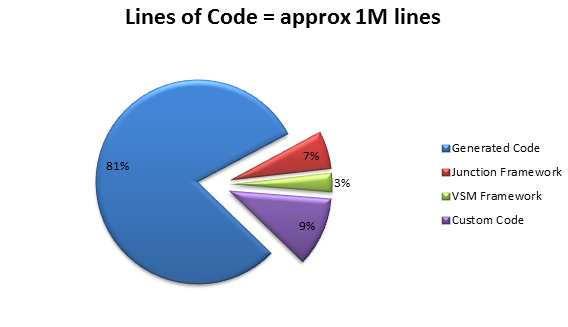- Learn More
- Products
Products
Coding Products
Testing & simulation Products
- In Action
In Action
Learn how our customers
benefit from using Simple CaseUse Cases
Read about recent projects we were involved in with customers in the Aerospace and Defense market
Solutions
Read about our solutions for different technologies
- Services
Professional Consulting
Read how you can benefit from our experienceSubcontracting
Do you need sub-contracting services for your project?Learn about our experience.
- Contact
Contact Us
Questions? Comments?
In need of guidance?
Contact our team by phone or e-mail.New Customers
Current Customers
Are you a current Adi customer in need of support?
Technical Support
972-4-6537269 Ext. 109
support@adisw.comProfessional Consulting
Use our experience to define your system communication
Professional Consulting
972-4-6537269
sales@adisw.com
UAV Systems
The Client
A leading maufacturer in the Aerospace & Defense market. The direct client was the division in charge of engineering and production of the company’s UAV systems and a worldwide leader in the field of UAV development.
The Client’s Needs
Following the adoption of an industry standard as guideline for all new Ground Station of UAV systems development, our client faced the problem of supporting communication interfaces between newly developed Ground Systems and their previously developed UAV systems, that do not conform to this standard. With a growing number of worldwide clients adopting it as the de facto standard, and not wishing to see a sharp drop in the sales of their UAV systems, the client needed a quick and viable solution for controlling legacy vehicles through interfaces that adhere to this standard.
The Solution
Based on requirements from project engineers, Adi Mainly Software designed and implemented the VSM system: a family of vehicle specific software modules that are shipped as part of each legacy UAV which is required to be controlled by Ground Systems that follow the new standard.
Throughout the process we relied heavily on our tools in each phase of the development to ensure that we deliver reliable software on schedule. The following table lists the tools we used for each activity performed in order to reach our goal:
| Activity | Tool |
|---|---|
| Defining data of interfaces between Ground Station ⇔ VSM and VSM ⇔ UAV | ICD16 |
| Defining relationships between incoming and outgoing data elements and messages | Junction16 |
| Defining UAV fail conditions, how to calculate them, and the actions to take upon occurrence | FDM16 |
| Generating code for VSM, UAV and Ground Station applications development | Files Generation |
| Implementation of VSM application | Junction and VSM frameworks |
| Functional and black box testing of VSM and Ground Station | Simulator |
| Automating smoke and regression testing | Testing Tool |
The Results
Pacman eating pizzas below gives you a good estimate of the amount of code generated from the tools and the generic framework code out of the total lines in a VSM application.

While measuring lines of code does not provide a completely accurate picture of the impact on the ROI, it does provide a general idea of the power of using the tools correctly.
Besides the obvious advantage of massive code generation, our client also received the following advantages:
- Framework reuse in subsequent projects which amounts to about 10% of the code.
- Consistent interface code from ICD was also generated to UAV and Ground Station developers, eliminating discrepancies and reducing integration time.
- Large parts of MIL-STD documents were generated from the tools. Sections of the SRS & IDD & SDD documents from the ICD16, the FDM16 and the Junction16 Tools, and STD/STR documents from the Test Manager.
- Simulators were generated while development was carried out allowing each feature to be tested as it was developed reducing development and testing time.
- Automatic functional and regression testing were implemented reducing time and increasing testing thoroughness.
- Test scenarios were reused in subsequent VSM projects.
Using all of these tools allowed us to cut the development time considerably to about 1/3 of the conventional estimated development time.


